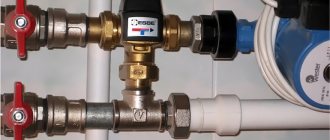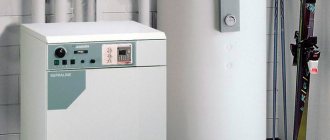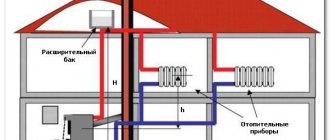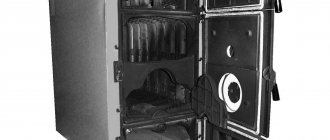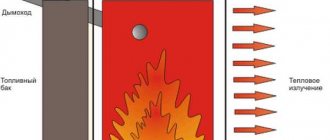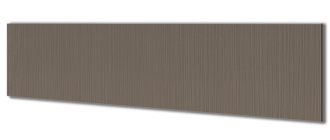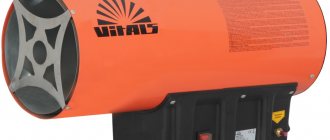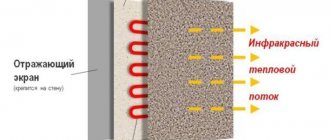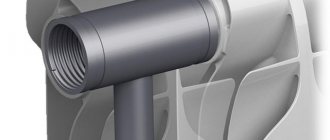Principle of operation
So, first you should understand what gas heaters are and how they work.
All models have common constituent parts, namely:
- frame;
- heat exchanger;
- heater;
- burner.
These elements are found in all gas heaters - from budget to the most modern.
More expensive models add convenience features such as a thermostat or automatic shutoff.
There is one more common point for all models - they run on gas, natural or liquefied. Using the device, fuel is converted into heat. Such a heater can be connected to both main gas and bottled gas.
Negative characteristics
When using gas infrared heating equipment, do not forget that it has a number of disadvantages, namely: high cost and expensive repairs if the unit fails. During operation, some heaters can negatively affect air quality. In order to maintain a comfortable indoor microclimate, the room will have to be ventilated from time to time. We must not forget that these devices reduce the level of humidity, which is why when using them it is recommended to additionally use air humidifiers. Among other things, the user will have to regularly refill them, check their serviceability, clean and calibrate the device. This is especially true for outdoor infrared heaters.
Varieties
All gas heaters are divided into portable and stationary.
The first ones are usually used temporarily, that is, from time to time. They are small in size and weight and are most often placed on the floor. Their productivity is, of course, less.
Such gas heaters are usually chosen for utility rooms or for summer cottages, as well as in the absence of a main gas supply. Such a unit will not withstand full and constant heating of a residential building.
The second (stationary) gas heaters are devices powered by main or bottled gas. These devices are installed only in a permanent place and will cope with winter heating of the house. Such heaters are large, powerful and require additional equipment such as a chimney.
Gas heaters are also divided according to their operating principle. There are three main categories:
- infrared;
- convection;
- catalytic.
- The operating principle of infrared heaters. Inside the housing there are burners with emitters made of metal or ceramics. When heated, they begin to emit heat - infrared waves. Those, in turn, heat not the air, but objects located at a certain distance from the heat source. Depending on the power, such devices are capable of heating large rooms and even open spaces.
- The operating principle of convection heaters. This is the simplest device. Roughly speaking, these are ordinary burners that burn gas. The resulting heat passes into special finned radiators. Thanks to convection and according to the laws of physics, heated air rises, and cold air takes its place, gradually warming up. If the correct power is selected for the room, the heat can be felt after just a couple of hours.
- Operating principle of catalytic models. These are perhaps the most fireproof gas stoves. There is no combustion process involved here. Heat is released as a result of a chemical reaction - gas oxidation. The fuel enters the catalytic panel, where it is oxidized, generating heat. The heating itself occurs by infrared, convection or mixed type.
Timberk TGN 4200 SM 1
A ceramic heater is a universal and mobile device that is quite budget-friendly. Its mobility is due to the compactness of the body, as well as the presence of a wheelbase for quick movement. The capabilities of the equipment help to successfully use it for heating rooms of various types and purposes.
The heater does its work from a propane cylinder (up to 12 liters inside), which easily fits inside the metal body of the heater. The device is connected via a reducer, clamps or a gas hose. The room is heated using infrared radiation, which occurs when a gas burner heats ceramic plates. The material leads to complete combustion of fuel, and the air does not contain combustion products.
To ensure high protection of use, the device includes a gas control and a sensor for monitoring the concentration of carbon dioxide in the room. Piezo ignition and power regulator are used as an additional control element.
Pros and cons of different types of gas heaters
The large selection of different models often simply leads to a stupor. Which heater will be better? Unfortunately, there is no definite answer; each type is bad in some ways and good in some ways. To choose the unit that is suitable for your needs, you need to familiarize yourself with their pros and cons.
We will not study the convection heater, since there are more modern and safer models. Instead, let's consider a new generation ceramic gas heater. Below are tables with the positive and negative characteristics of each type.
Catalytic
| pros | Minuses |
| Very compact. The operating principle allows you to keep the size of the device to a minimum. | Cannot be used in confined spaces. Be sure to have good ventilation. |
| No additional pipes or dirt, since there are no combustion products. | |
| The device does not require electricity to operate - it is completely autonomous. | |
| Economical fuel consumption. | |
| Safety. There are no burners or open flames. |
These devices are very effective. As stated above, heating can occur in three ways. Some models are additionally equipped with fans for uniform heat distribution.
Infrared
| pros | Minuses |
| Possibility of heating open and closed spaces. Such models are great for cafes, playgrounds or pool areas. | Burns oxygen. That is, ventilation is necessary in any case. |
| Large coverage area - outdoor models can heat objects at a distance of up to 6 meters. | Low fire protection. Even with the maximum protective measures taken by manufacturers, the device can cause a fire. |
| Mobility. Lightweight and compact models. | |
| High efficiency. | |
| In most cases, the device operates completely autonomously. |
Ceramic
| pros | Minuses |
| Easy to use. | Requires regular maintenance, which is not an easy task. The list includes: calibration, filling the cylinder, cleaning the main parts and checking for wear. |
| Mobile and compact. | |
| Reliable. | |
| Economical in comparison with liquid fuel analogues. | |
| Heats up the room very quickly. | |
| Safe. |
Thermal gas guns
A characteristic feature of the heat gun from our example is its high performance and power. That is, it is good when the air in the room needs to be heated as quickly as possible.
They are used mainly as a working tool for repairs and construction. Moreover, not always only for heating. Guns are used for drying structures, softening stretch ceiling films, and drying work clothes.
A gas gun is good when you need to quickly heat a large non-residential space.
But such a heater is inconvenient in a living room. It's not even a matter of the noise created; it's not that great. Guns burn a large volume of gas, burning out oxygen, saturating the air with combustion products and require increased ventilation.
I recommend: Turkish carpets for the floor: the main reasons for their popularity
In addition, the gun produces a strong stream of hot air. In a confined living space this may not be safe.
What you need to know when choosing
And yet, how to choose a gas heater? First you need to know exactly the purpose of the heater.
So, for open areas (sites, etc.), a unit in the form of a high lantern is recommended. It will heat a circular area, such as a terrace, playground or pool area.
When choosing a gas heater for your dacha, you should pay attention to floor-standing models.
For residential premises, a device with a catalytic operating principle is more suitable. This is the safest option for others.
If possible, you should pay attention to stationary gas heaters. These are ideal for a year-round home.
What power should the heater have?
The best gas heaters
To help you at least a little with your choice, we present an overview of the best gas heaters in different categories.
The first place in the ranking of mobile heaters for summer cottages is occupied by the Timberk TGN 4200 SM1 .
Main characteristics:
- floor;
- heats up to 60 cubic meters. m;
- power 4.2 kW;
- closed;
- weight 7.4 kg;
- electric ignition;
- gas control;
- three burner operating modes.
Powered by a gas cylinder, which is installed in a metal case. The delivery set includes a hose, reducer and clamps.
The device also has a CO2 sensor and tip-over protection. Convenient to move thanks to wheels.
The only negative is that you need to periodically ventilate the room.
The average price of the model is 4,800 rubles.
Hosseven HP-3 model received gold .
Main characteristics:
- wall;
- heats up to 30 sq. m;
- power 3 kW;
- weight 28.5 kg;
- thermostat;
- temperature adjustment;
- mechanical control.
The first thing that catches your eye is the unique design of the device: the body is black, the front panel is made of heat-resistant, impact-resistant glass. Very reminiscent of a fireplace.
This stationary heater can operate on both main and bottled gas.
Heats up the room quickly and looks great.
The price of the model is on average 25,000 rubles.
The rating of street models was topped by Enders Elegance .
Main characteristics:
- street;
- heating diameter - 9 m;
- power 8 kW;
- weight 12.5 kg;
- height 2.2 m;
- wheels for moving;
- shutdown when tilted more than 45 degrees;
- mechanical ignition.
This model is perfect for gazebos, verandas and other outdoor recreation areas or cafes. Thanks to its stylish appearance, it will not only fit in, but also decorate any place.
The device uses the new Enders-Eco-Plus technology. It is this that provides heating at 12 kW with a real power of 8 kW.
The average cost of such a model is about 24,000 rubles.
Main types of gas heaters for tents
To find out which gas heater for a tent to choose, you need to consider each type. Gas tent heaters are divided into the following types:
- ceramic;
- metal;
- catalytic.
The heating principle for the first option is based on the use of a ceramic plate, which is saturated with energy from the heater. The gas burns in the burner, the infrared emitter extracts energy, and the ceramic plate releases heat, providing heating. Gas infrared heater is less popular because it has a low efficiency of 50%. The advantage of gas ceramic tent heaters is their affordable cost, which makes such devices more in demand.
The second type of tent heaters is equipped with a metal radiator. The steel rods of the working device are in a protected position, so this type of device, like the ceramic one, is safe. The advantage of this device is the ability to adjust the direction of heat flow. Metal-type devices are used for large tents, since they can be used to heat a large area. Despite this, a metal gas tent heater has an even lower efficiency value of 30%.
The third type of heaters is called catalytic. Such devices are the safest and most effective. The advantage of such structures is their high efficiency rate of 99-100%. The construction of such heaters uses fiberglass and a layer of platinum. Catalytic type models are fireproof, as they do not have an open flame, and are environmentally friendly.
Fast heating and quiet operation add additional advantages to catalytic heaters for tents. These heaters are popular, and their cost is based on the power of the device. Such a disadvantage as the inability to replace the “native” cartridge on most models of catalytic heaters makes it less versatile than the previous two types.
